National Carillon
- Home
- Attractions
- National Carillon
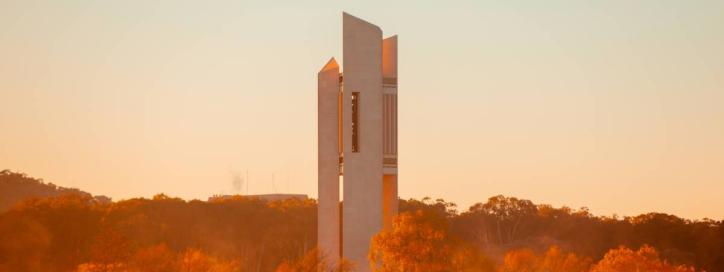
National Carillon Recital TimesSundays 12:30 - 1:30pm |
Guided ToursWant to take a tour of the National Carillon? |
The National Carillon is one of Canberra’s most photographed landmarks, but did you know it’s also one of Australia’s largest musical instruments? Opened in 1970, it was a gift from Britain to mark Canberra’s 50th birthday. The carillon houses 57 bronze bells, weighting a total of 32,000kg, which are played from a specially designed keyboard.
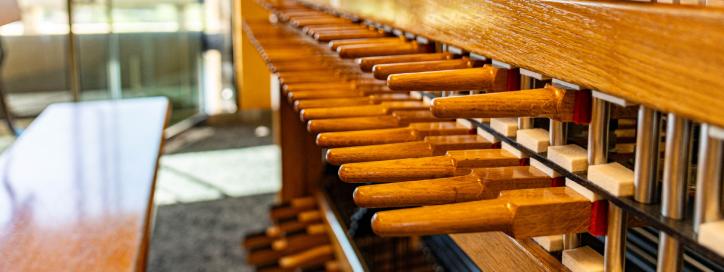
Our team of talented carillonists perform a wide variety of music, from Bach to Star Wars, and you may hear them practicing during the week. You may also recognise the Westminster Chimes which chime on the quarter hour throughout the day. Come along to one of our regular concerts, tours, or special events and discover this hidden gem.
Special Events
Chime In - A Carillon Celebration
Saturday 11 October
10:00am - 2:00pm
Meet our Carillonists
Information and bookings
- phone (02) 6272 2902
- email nce@nca.gov.au
Access to the National Carillon is via Kings Avenue (north bound lane only).
National Carillon
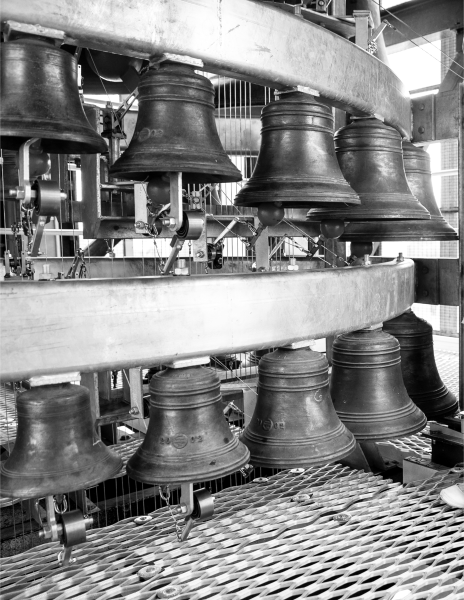
Located on Queen Elizabeth II Island, Lake Burley Griffin, the National Carillon was gifted by the British Government to the city of Canberra in commemoration of the Golden Jubilee of the naming and founding of the National Capital.
A carillon must have at least 23 tuned bronze bells and be played from a specially designed clavier. With 57 bells, the National Carillon is large by world standards. The pitch of our bells ranges chromatically through almost five octaves, and they weight between seven kilograms and 6,000 kilograms. Cast in England by John Taylor & Co in Loughborough, they are fine examples of the art of bell founding.
Carillonists play the stationary bells from a specially designed keyboard of wooden batons and pedals known as a clavier. An intricate transmission system of cables directed tumblers and springs connect the soft iron clappers to the keyboard. When a key is pressed down, the clapper moves towards and strikes the inside of the bell to create a sound.
Five of the bells can also chime via a separate automated mechanical system known as the Westminster Chimes. The chimes are a symbolic connection with the British Houses of Parliament and like a grandfather clock, the bells sound every 15 minutes between 8:00 am and 10:00 pm to mark the passing of time.
The carillon is a highly expressive instrument, capable of great musical variation in the hands of a skilled performer. Carillon performance is supported by a rich tradition, with established schools in Europe and North America, and Australian carillonists regularly participate in international recitals and festivals.
Local and visiting carillonists present recitals at the National Carillon throughout the year. These performances feature a wide range of musical styles from original compositions written specifically for the carillon, to popular song arrangements and improvisation. The carillon often marks special occasions and is frequently included as part of broader public events.
History
The National Carillon tower was the prize-winning design of Western Australian architects Cameron, Chisholm & Nicol. The design of the tower comprises three angular columns clad in quartz and opal chip. Each shaft is a triangle in plan, and each is aligned with one of the three sides of a central equilateral triangle representing the National Triangle, a nod to the original Griffin Plan for Canberra.
The tower stands 50 metres from ground level and has some of the best views of Lake Burley Griffin. The first floor is approximately halfway up the tower and contains the keyboard known as the George Howe room, one of Canberra’s first carillonists. Above this is the bell chamber itself, and lastly, at a height of 36 metres above ground level, is a small viewing room called 'Chimes'.

The Carillon was constructed with a concrete frame and site-fabricated, by positioning and jointing the cladding, erecting self-climbing formwork on the inside and infilling stage by stage from the bottom with reinforcement and concrete. An opening had to be left in the centre of the floor to allow the biggest bells to be hoisted to the bell chamber, since they were too large to pass up any of the three shafts.
On 26 April 1970 a crowd of 25,000 people gathered on the lake shore as Queen Elizabeth II officially opened the National Carillon. She then climbed the stairs to meet the Carillonist John Douglas Gordon, after whom the Queen Elizabeth II Island footbridge is now named.
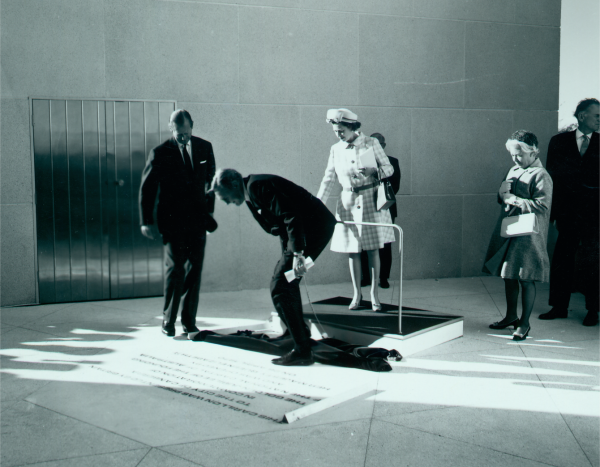
A number of upgrades have occurred over the years, with additional bells being added and enhancements to the instrument. The most recent major works occurred in 2020 which included two additional bells, a custom-built keyboard, and a refreshed transmission system. As part of these works the National Capital Authority dedicated a new five tonne Ngunnawal bell in consultation with Ngunnawal Elders. The bell was cast by the original founders John Taylor and Co in England, transported to Australia by the Royal Australian Air Force and inscribed with the following dedication:
YUMALUNDI DHAWURA NGUNNAWALNGU NGANAA
GURALILI YARABI DHAWURA MANAGAY
WELCOME TO NGUNNAWAL COUNTRY
YOU MAY LEAVE YOUR FOOTPRINTS ON OUR LAND
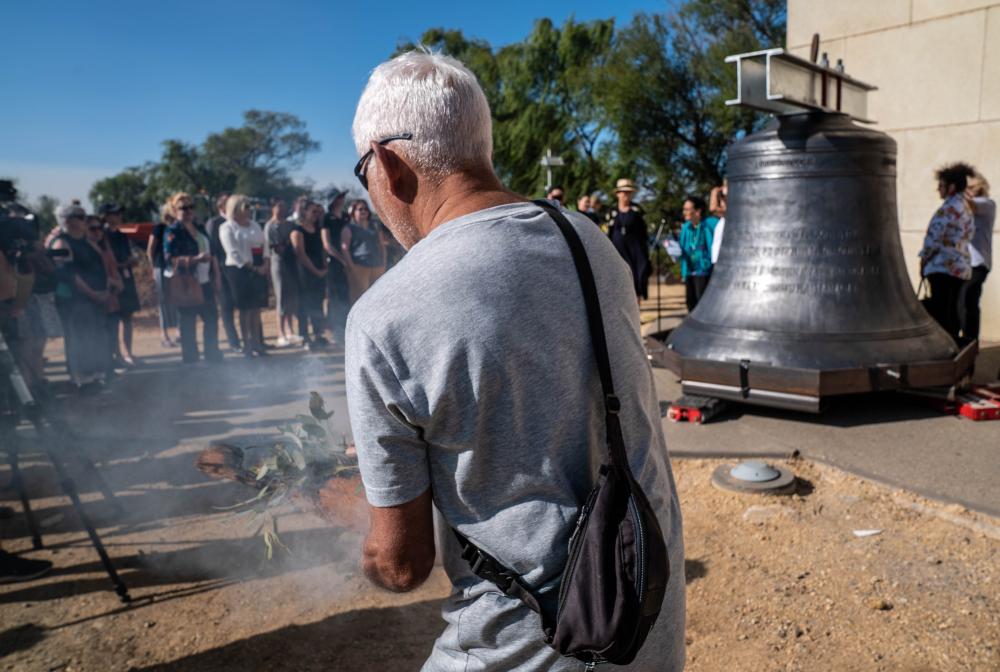
On 3 February 2020, 50 years after the inauguration of the Carillon, a Welcome to Country and Smoking Ceremony was held at the base of the carillon. Visitors were invited to place their hand on the bell before it was hoisted to its place in the bell chamber where the Ngunnawal Bell now rings out as a sign of our ongoing commitment to reconciliation and mutual respect. It stands as a tribute to the Ngunnawal people who continue to share stewardship of this land with the National Capital Authority and with all Australians.


- Attractions
- Events
- Education
- Planning
- Planning in the National Capital
- Works Approval
- Heritage
- Heritage Strategy
- Heritage Management Plans
- ANZAC Parade Heritage Management Plan
- Acton Complex Draft Heritage Management Plan
- Australian American Memorial and Sir Thomas Blamey Square Heritage Management Plan
- Blundells Cottage Heritage Management Plan
- Changi Chapel Heritage Management Plan
- Commencement Column Monument HMP
- General Bridges Grave Heritage Management Plan
- High Court – National Gallery Precinct HMP
- King George V Memorial Heritage Management Plan
- Lake Burley Griffin and Adjacent Lands Heritage Management Plan
- National Carillon and Aspen Island Heritage Management Plan
- National Rose Gardens Heritage Management Plan
- Old Parliament House Gardens Heritage Management Plan
- Parliament House Vista Heritage Management Plan
- State Circle Cutting Heritage Management Plan
- Surveyors Hut and Surveyors Park Heritage Management Plan
- York Park Heritage Management Plan
- Heritage Management Plans under consultation
- Heritage Management Plans previous consultations
- Consultations
- Plans, policies and guidelines
- National Capital Plan
- Heritage Management Plans
- Planning Policy Review
- Urban design
- Acton Peninsula Precinct Structure Plan
- City and Gateway Urban Design Framework
- Constitution Avenue Public Realm Handbook
- Creating Places for People and Road User Hierarchy
- Deakin Forrest Residential Precinct Guidelines
- Guidelines for Commemorative Works in the National Capital
- Guidelines for Perimeter Security in the National Capital
- Outdoor Lighting Policy
- Parliamentary Zone Review
- The Griffin Legacy
- Tree Management Policy
- West Basin Precinct Guidelines
- Yarralumla Bay Recreational Hub Master Plan
- Your Capital, Your Say
- Environment
- National Land management
- Asset management
- Lake Burley Griffin
- NCA Projects
- Current NCA Projects
- Past NCA Projects
- Anzac Parade works
- Blundells Cottage Conservation and Interpretation Project
- Boundless Playground Picnic Deck
- Boundless parking extension
- Bowen Place Crossing
- Captain Cook Memorial Jet Upgrade Works
- Car Park Upgrades
- Commonwealth Park Lighting Replacement
- Dame Dorothy Tangney and Dame Enid Lyons Sculpture
- Draft Tree Management Policy
- Dunrossil Drive Pine Tree Replacement
- Furniture upgrade in Commonwealth Park
- High Mast Lighting
- International Flag Display Extension & Lighting Upgrade
- Interpretive Signage in the National Triangle
- John Gorton Building Car Park Upgrade & Associated Works
- John Gorton Building East Car Park Car Park Lighting Replacement Works
- King George V Memorial Works
- Kings Avenue Overpass
- Kings Park Improvements
- Lake Burley Griffin Wall Renewal Program
- Landscape Renewal at the Forecourt of the National Library of Australia
- Merchant Navy War Memorial Upgrade
- National Carillon Upgrade Works
- National Gallery of Australia Foreshore Upgrade
- Old Parliament House Gardens – rose name signage
- Regatta Point Redevelopment
- Restoration Works for the National Emergency Services Memorial
- Scrivener Dam Anchor Bolt Remediation
- Sir John Gorton Sculpture
- Sir John McEwen / National Party of Australia Centenary Commemoration
- Stirling Park improvements (Gura Bung Dhaura)
- Public Interest Certificates
- Parking
- About us
- Who we are
- Our Board
- Our Staff
- Volunteers
- Canberra National Memorials Committee
- History of the NCA
- 1913 - 1920 Walter Burley Griffin, Federal Capital Director of Design and Construction
- 1921 - 1924 Federal Capital Advisory Committee
- 1925 - 1930 Federal Capital Commission
- 1938 - 1957 National Capital Planning and Development Committee
- 1958 - 1989 National Capital Development Commission
- National Capital Planning Committee
- 1989 to Present Day National Capital Authority
- What we do
- Corporate documents
- Careers
- Key Governance Documents
- Video gallery
- Who we are
- Media centre
- Contact us
Acknowledgement of Country
We acknowledge the Ngunnawal people as traditional custodians of the ACT and recognise any other people or families with connection to the lands of the ACT and region.
We acknowledge and respect their continuing culture and the contribution they make to the life of this city and this region.
